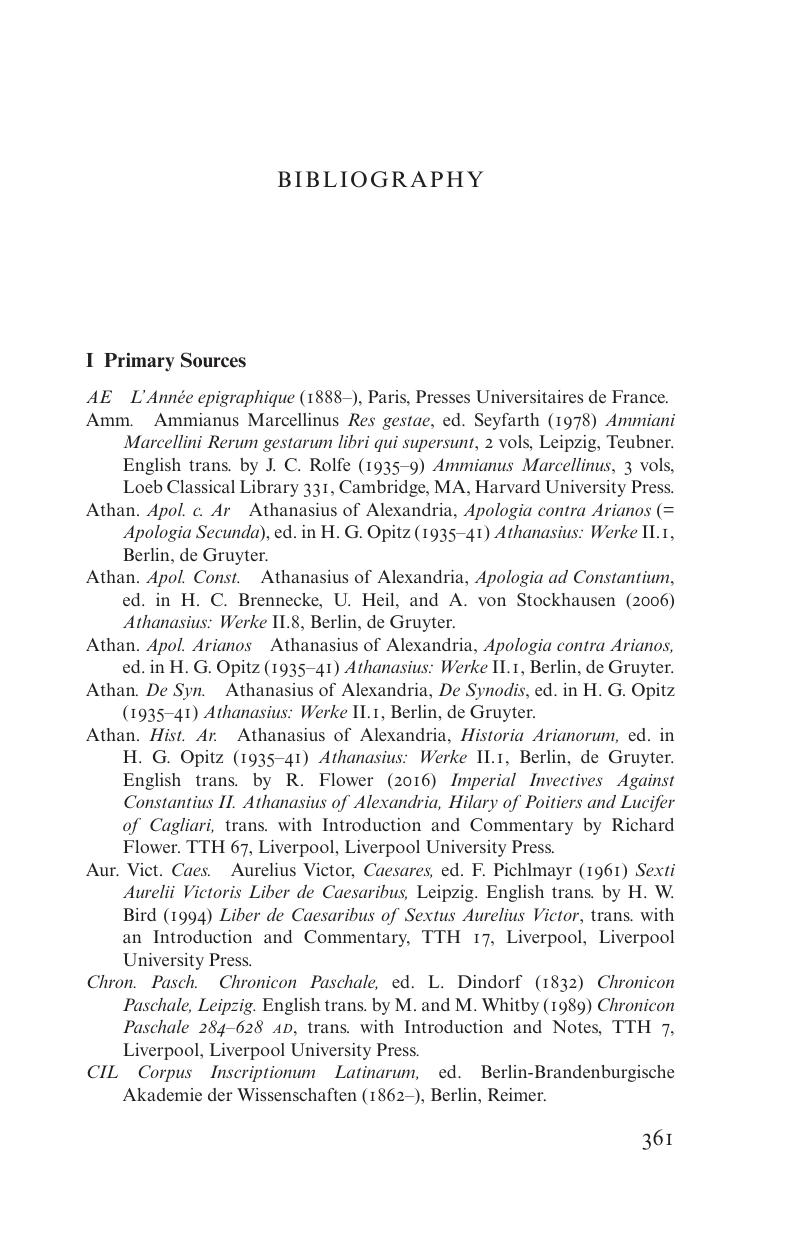 Emperor and Senators in the Reign of Constantius II
Emperor and Senators in the Reign of Constantius II Book contents
- Emperor and Senators in the Reign of Constantius II
- Cambridge Classical Studies
- Emperor and Senators in the Reign of Constantius II
- Copyright page
- Contents
- Figures
- Acknowledgements
- Abbreviations
- Introduction
- Part I A Unified Roman Empire (ad 312–337)
- Part II Ruling the East (ad 337–350)
- Part III Ruler of Rome and Constantinople (ad 350–361)
- Conclusion
- Book part
- Bibliography
- Index
- References
Bibliography
Published online by Cambridge University Press: 23 November 2018
- Emperor and Senators in the Reign of Constantius II
- Cambridge Classical Studies
- Emperor and Senators in the Reign of Constantius II
- Copyright page
- Contents
- Figures
- Acknowledgements
- Abbreviations
- Introduction
- Part I A Unified Roman Empire (ad 312–337)
- Part II Ruling the East (ad 337–350)
- Part III Ruler of Rome and Constantinople (ad 350–361)
- Conclusion
- Book part
- Bibliography
- Index
- References
Summary

Information
- Type
- Chapter
- Information
- Emperor and Senators in the Reign of Constantius IIMaintaining Imperial Rule Between Rome and Constantinople in the Fourth Century AD, pp. 361 - 406Publisher: Cambridge University PressPrint publication year: 2018